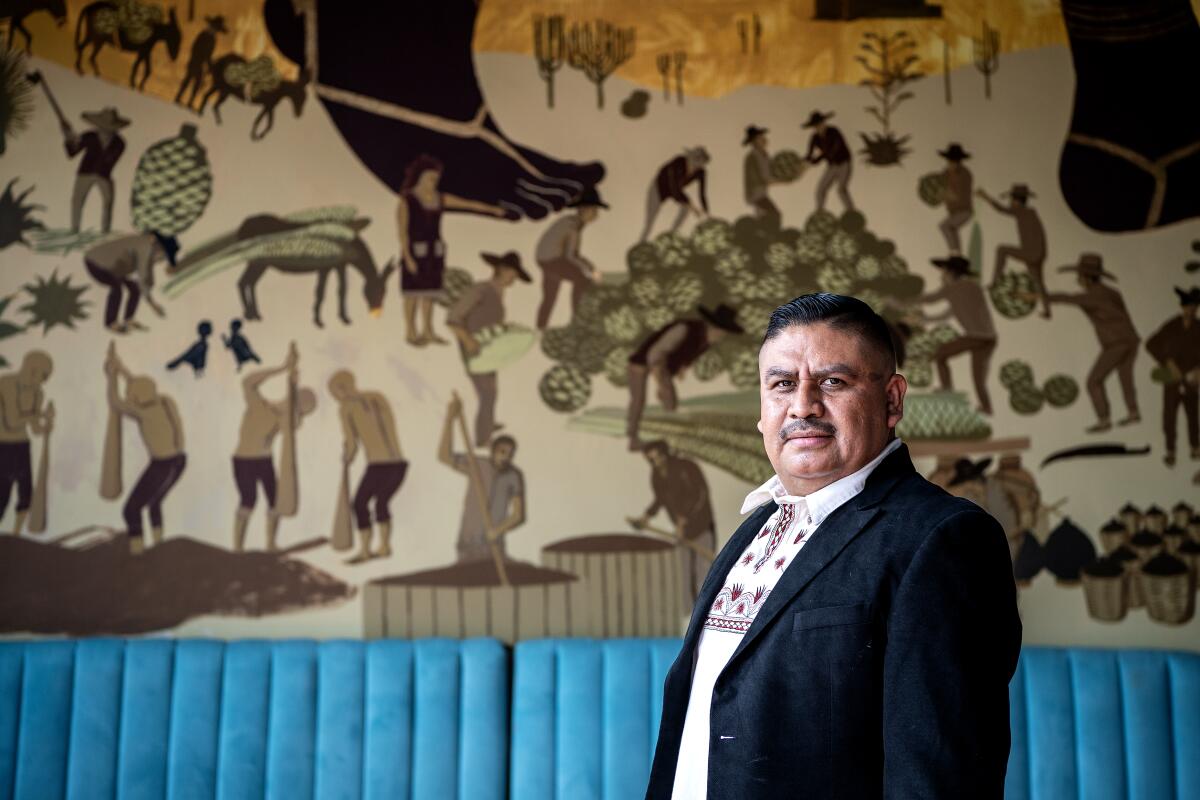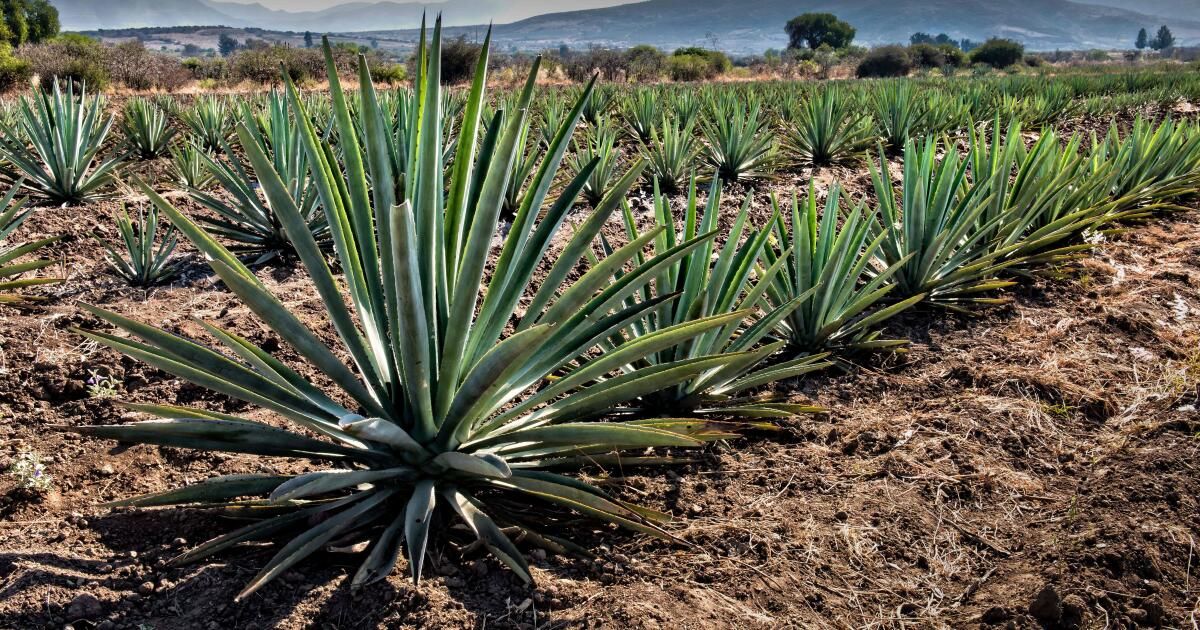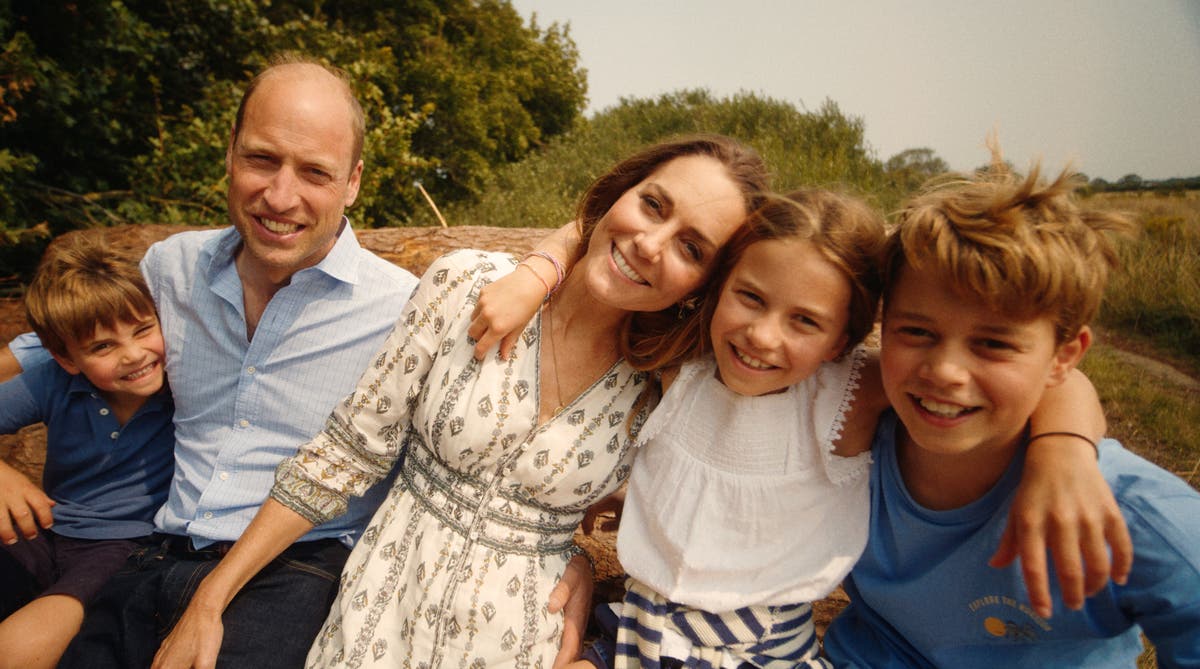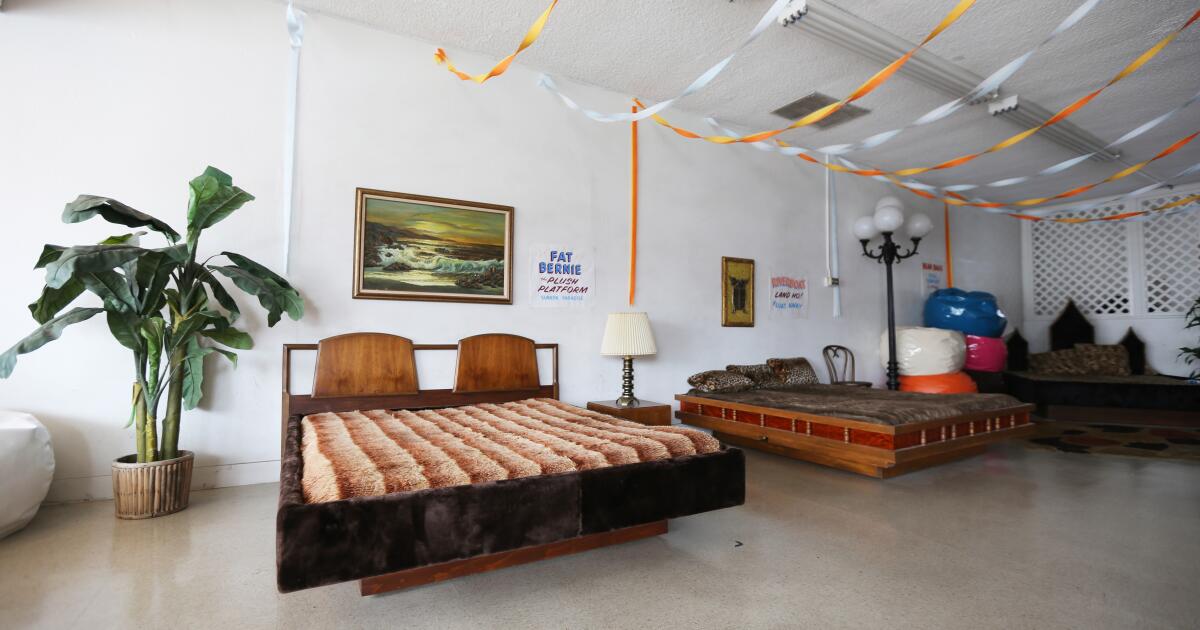Photos and videos started flooding in on February 27. In a region of Oaxaca famous for its tasty mezcal, a forest fire raged dangerously close to the town of San Lucas Quiavini.
Huge columns of smoke choked the horizon as flames advanced toward the city of 1,700 inhabitants. As night fell, local officials put out an urgent call for volunteers to come out the next morning to put out the fire. They asked for people over 18 who knew the roads and urged them to put on helmets and masks.
It would be days before the state government intervened with enough equipment and resources to control the fire. Meanwhile, the residents of San Lucas Quiaviní and neighboring towns of this agave center tried to mount a defense with shovels, pickaxes and the little water they could.
When the government declared the wildfire contained on March 5, it had burned more than 1,700 acres. And five men from San Lucas Quiavini had died after heeding the call to battle.
Some of the fire victims had worked in Los Angeles and had close relatives here. Their deaths have struck a chord in the city, home to the largest indigenous Oaxacan population outside of Mexico. Oaxacan restaurant owners and youth organizers have come out in support, raising money and donations to help families and towns that suffered losses.
The murdered men have been identified by local officials and organizers as Rafael Antonio Morales, 65; Pedro Curiel Diego, 64 years old; Felipe García, 41; Celso Diego, 65 years old; and José Hernández López, 47 years old. They were all farmers.
Family members and restaurant owners organizing support in Los Angeles say the Mexican government failed the cities and waited too long to mount an air defense. More generally, they believe that the rise of mezcal production in this region of Oaxaca has left indigenous communities more vulnerable to natural disasters.
Mezcal, long a traditional and medicinal drink for Oaxacans, has gained popularity in the United States and beyond as a younger generation turns to craft spirits. As demand for the smoky liquor has increased, vast swathes of forest in Oaxaca have been cleared and planted with agave, eroding the soil and weakening natural defenses in a mountainous region prone to wildfires and landslides.
The growing popularity of mezcal spirits has raised environmental concerns in Oaxaca as more land, water and firewood are dedicated to the cultivation and distillation of agave.
(Pedro Pardo/Getty Images)
At least 50 wildfires have broken out in Oaxaca in just the first few months of 2024, although wildfire season in the state usually begins in mid-March, according to El Universal, a Mexican publication.
“We are in a critical period of drought and heat,” Oaxaca Governor Salomón Jara Cruz said at a March 5 press conference. “The consequences are that we are more likely to experience any wildfire, whether short or minor.”
Jara Cruz acknowledged that the state was delayed in getting air support to San Lucas Quiavini, but said it quickly deployed 267 people and 50 vehicles on the ground. She showed videos of the massive fire taken from the air, as well as images of women from San Lucas Quiaviní carrying plastic jugs of water on their heads as they climbed steep hills to bring water to the men fighting the fire. The men who died reportedly went missing on February 28, the day after they volunteered for service.
“At all times we have acted with responsibility and opportunity to protect the life and integrity of Oaxacans,” said Jara Cruz.
In Los Angeles, days after the discovery of the bodies, young indigenous people held a demonstration outside the Mexican consulate office in MacArthur Park to protest what they said were the government's negligent efforts to protect the people of San Lucas Quiavini.
“I found out from my cousin that they don't even have proper shoes. They only have huaraches,” said Mireya Curiel, a Los Angeles resident who is Zapotec and knew three of the men who died. “They are using machetes; They are using shovels. “They didn’t have anything prepared for a fire.”

Young indigenous people in Los Angeles organized a protest to condemn what they said was a lack of urgency by the government in sending equipment and personnel to protect Oaxacan towns from wildfires.
(Courtesy of Daphne Santos)
One of the dead, Rafael Antonio Morales, was a long-time friend of Curiel's family. He was known for offering a friendly smile and helping out around town. He called two others, Pedro Curiel Diego and Celso Diego, uncles because of how close they were to his family.
“These people were not only older, but they were also experts on the land,” said organizer Randy Santiago, a Zapotec from Santiago Matatlán. “His loss to his community has been immeasurable. Their experience, their knowledge of the land, their knowledge of tradition, culture, everything, is now lost. “That's the government's fault.”
In recent days, the group of young people has collected supplies requested by the population of Oaxaca: masks and respirators, fire-resistant boots and clothing, battery-powered headlights, gloves and compression socks. They were able to transport the supplies to Tijuana, where someone picked them up and delivered them to Oaxaca, in southern Mexico. They have raised more than $40,000 to purchase more supplies and support families affected by the fire.
José Curiel of Venice lost an uncle, Pedro Curiel Diego. He has launched a GoFundMe campaign to raise money for his cousin, Diego's daughter. His uncle spent about 10 years working as a dishwasher in Los Angeles before returning to the hometown he missed so much, Curiel said.
San Lucas Quiavini, Curiel said, is a rustic town where few people have cars and some households still collect water with barrels. It doesn't have the appeal of larger cities in the region, such as Santiago Matatlán, known as the “mezcal capital of the world,” which offer tour packages that combine mezcal tasting with tours of agave fields. But it is peaceful and many in the Oaxacan community of Los Angeles plan to return there to build their dream homes. He said the men who died did so in defense of that sense of community.
“They came out to help, to make sure not only that they were safe, but also to save their families, their city and their entire community,” Curiel said.

Iván Vásquez, owner of Madre Oaxacan Restaurant & Mezcaleria, worries that the mezcal market is reshaping Oaxaca in ways that threaten indigenous communities.
(Mariah Tauger / Los Angeles Times)
Iván Vásquez, owner of Madre Oaxacan Restaurant & Mezcaleria, which has four locations in Los Angeles County, spent a recent Sunday afternoon auctioning off vintage mezcal bottles to raise funds for affected towns, an event that generated more than $8,000. Vásquez, originally from the city of Oaxaca, frequently travels to the region to purchase spirits from small-batch mezcaleros.
Vásquez said he was frustrated by the lack of awareness among large mezcal-producing companies moving to Oaxaca that benefit from the extensive agave fields but have not yet supported communities affected by the fire.
“Every time I go to Oaxaca and leave the city and go to the towns, I see more agave fields replacing the trees,” he said. “The more agave you see, the more flattened land, the more fires we are going to have. And we are going to receive less water.”
Vásquez, who is Zapotec, said he is concerned about the future of indigenous communities as the mezcal market continues to reshape rural Oaxaca and global warming exacerbates conditions.
“This is just the beginning,” he said.












